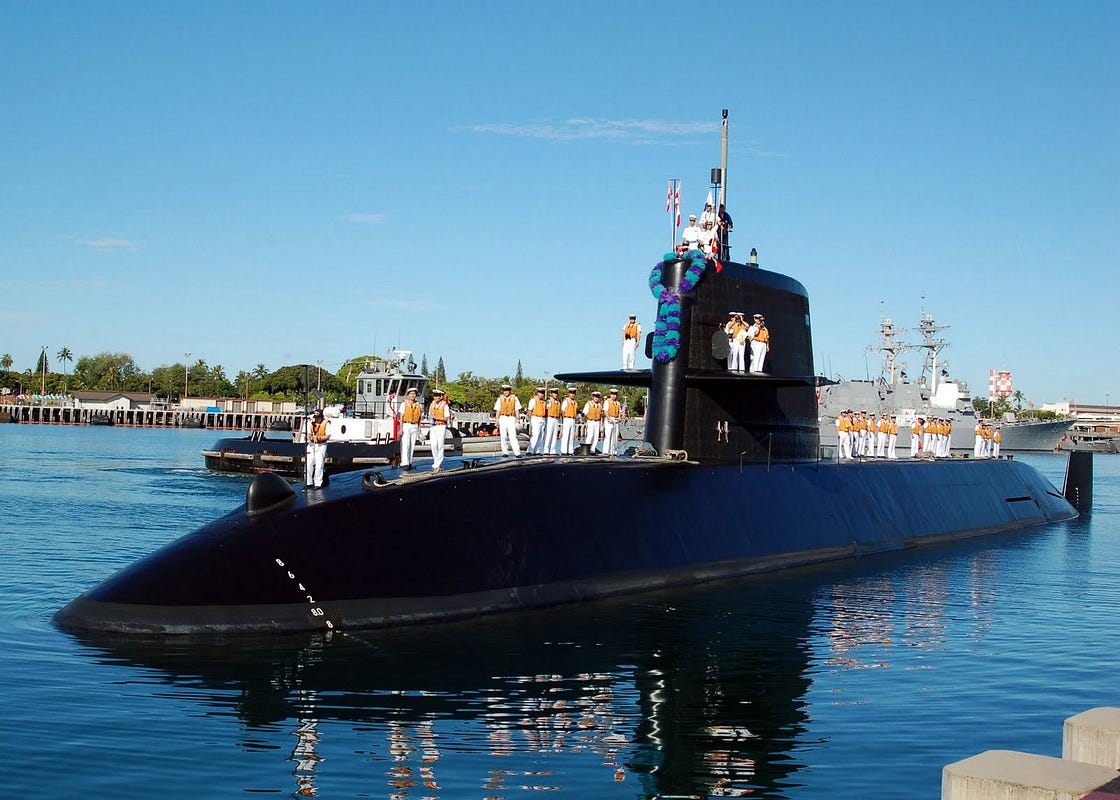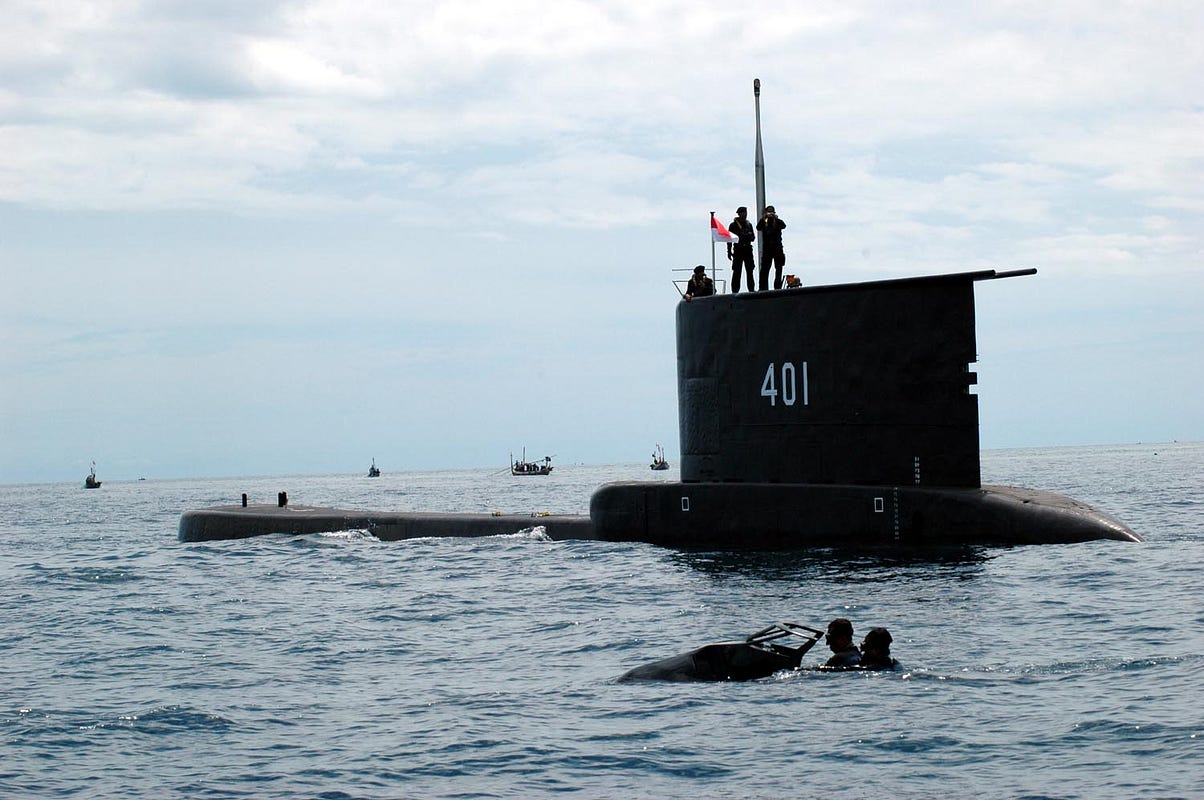
In early January, the heavylift ship Rolldock Sea entered the Vietnamese port of Cam Ranh Bay towing a submarine. The sub, HQ-182, is a Russian-madeImproved Kilo-class boat, one of six ordered by the Vietnamese navy in 2009.
HQ-182, also known as the Hanoi, is Vietnam’s first submarine.
Displacing 4,000 tons underwater, the diesel-powered Kilos have six tubes for launching guided torpedoes or supersonic SS-N-27 “Klub” anti-ship missiles. So quiet that they’re called’ “black holes” by the U.S. Navy, the subs can sit silently off Vietnam’s coast, waiting in intercept and sink any attackers. The six Kilos will be Vietnam’s capital ships.
And Hanoi isn’t the only Asian government buying submarines. Malaysia has also purchased two. Thailand just built a new submarine headquarters—now it just needs the actual subs. South Korea is doubling its undersea fleet, while Japan is growing its sub force by more than a third.
Across Asia and the Pacific, defense budgets are going up and the money is going deep ... very deep. To keep the peace and win at war, the region’s navies are betting on submarines.

China’s second-order effects
As Asian nations grow economically, it’s natural for them to build up their navies. Many of them are heavily reliant on sea shipping to import natural resources and export finished goods. Japan imports 96 percent of its energy. South Korea imports 90 percent of its food. For many of these countries, losing the sea would mean disaster.
China is no exception. Traditionally a land power, as China’s economy grows its interests are becoming global. Among other things, China is now dependent on Mideast oil, raw materials from Africa and Australia and the whole world as a market for its goods.
As a result, Beijing’s navy is growing at breakneck speed. China commissioned its first aircraft carrier Liaoning in 2011—and is reportedly building several more flattops along with destroyers, frigates and amphibious ships.
Undersea, China’s submarine fleet has expanded to include both nuclear- and diesel-powered boats—some manufactured domestically, others purchased from Russia.
At the same time, Beijing has been using its new political and military might to pursue longstanding territorial claims. It has called dibs on virtually all of the South China Sea, putting it in direct conflict with Taiwan, Thailand, Singapore, Vietnam, Malaysia, the Philippines, Brunei and Indonesia.
And Beijing’s claim on Japan’s Senkaku Islands in the East China Sea put it in direct conflict with Japan and Taiwan.

Keeping up with the Tanakas
Those countries finding themselves in the way of Beijing’s territorial ambitions understand there’s no point trying to match China ship for ship. China can out-build any rival except for the United States.
The answer, then, is to add submarines. Undersea boats are low-profile, deadly killers that can lurk in disputed areas and deny them to the enemy. Difficult to detect, they can destroy ships many times their own size.
Submarines also flip the script on China, which has been advancing an “anti-access, area-denial” strategy for keeping the the United States out of the Western Pacific. The idea behind A2AD is to make it too dangerous for a hostile power to enter a certain area. Smaller Asian powers can fashion similar strategies to keep the Chinese navy out of their own backyards.
This is what Japan has in mind as increases its sub force from 16 to 22 boats. Japan’s undersea fleet is considered one of the best in Asia, and Japan’s geography means its subs could easily prevent the Chinese navy from using many of its traditional approaches to the open ocean.
Direct confrontation with China doesn’t explain everything, though. South Korea, while concerned by China’s buildup, is not particularly motivated by any sense of crisis. South Korea is more likely interested in maintaining some level of parity with its neighbors China and Japan, without regarding either as a looming threat.

Domestics and imports
A handful of Asian countries have the know-how to build their own submarines. Russia is slowly rejuvenating its sub fleet after decades of neglect. America’s submarine fleet is the gold standard, with the latest technology, nuclear power in all boats and the advantage of sheer numbers.
Australia, Japan and India can build their own subs, with varying degrees of success. The Australian Collins-class diesel submarines have been dogged by technical problems, and India is just beginning to build submarines with Russian assistance. Even high-tech Japan uses certain Swedish technologies to allow its submarines to stay submerged longer underwater.
Those governments that can’t make subs buy them—and they buy from Europe. The largest exporter of submarines to Asia is Russia, which is doing gangbusters selling Kilo-class boats such as Hanoi. Vietnam, India and China all operate some version of the Kilo submarine, an irony considering that both Vietnam and India have gone to war with China in just the last 50 years.
The Kilo is Russia’s most successful submarine export. A Cold War design dating back to the late 1970s, it’s been updated to keep it relevant in 21st-century waters.
India has nine older Kilos purchased in the 1980s. It had 10 until 2012, when INS Sindhurakshak was destroyed in an explosion. China operates 10 Improved Kilos, and last year placed a further order for four Russian Lada-class submarines. This suggests that China is not entirely happy with the performance of its latest locally-built boats, the Yuan class.
Germany is the next largest exporter. South Korea, which already has nine German-designed Type 209 diesel subs made in both Germany and South Korea, is expected to license-build nine newer Type 214s, effectively doubling its submarine force. South Korea will also build three modified Type 209s for Indonesia.
France also exports diesel submarines to Asia. Paris’ export submarine, theScorpene class, has six tubes for firing Black Shark torpedoes and Exocet anti-ship missiles and can stay at sea for 50 days. Malaysia received two Scorpenes. India has an on-again, off-again order for six Scorpenes that has been snarled by budgetary issues and bureaucracy.

Invisible deterrence
Do all these new submarines make war in Asia more likely or less? Will an increasingly aggressive China be discouraged by a proliferation of subs along its coastline, or will that spur China to build up its own navy even further?
Even with the hindsight of a century of submarine warfare, it’s hard to tell. Subs typically do very well in war until the other side becomes proficient in anti-submarine warfare. China has no tradition of anti-submarine warfare, which is a bonus for its smaller rivals.
If Asia’s burgeoning submarine fleets prove to be a credible deterrent, they could go a long way toward maintaining peace in the region.Kyle Mizokami in War is Boring
No comments:
Post a Comment